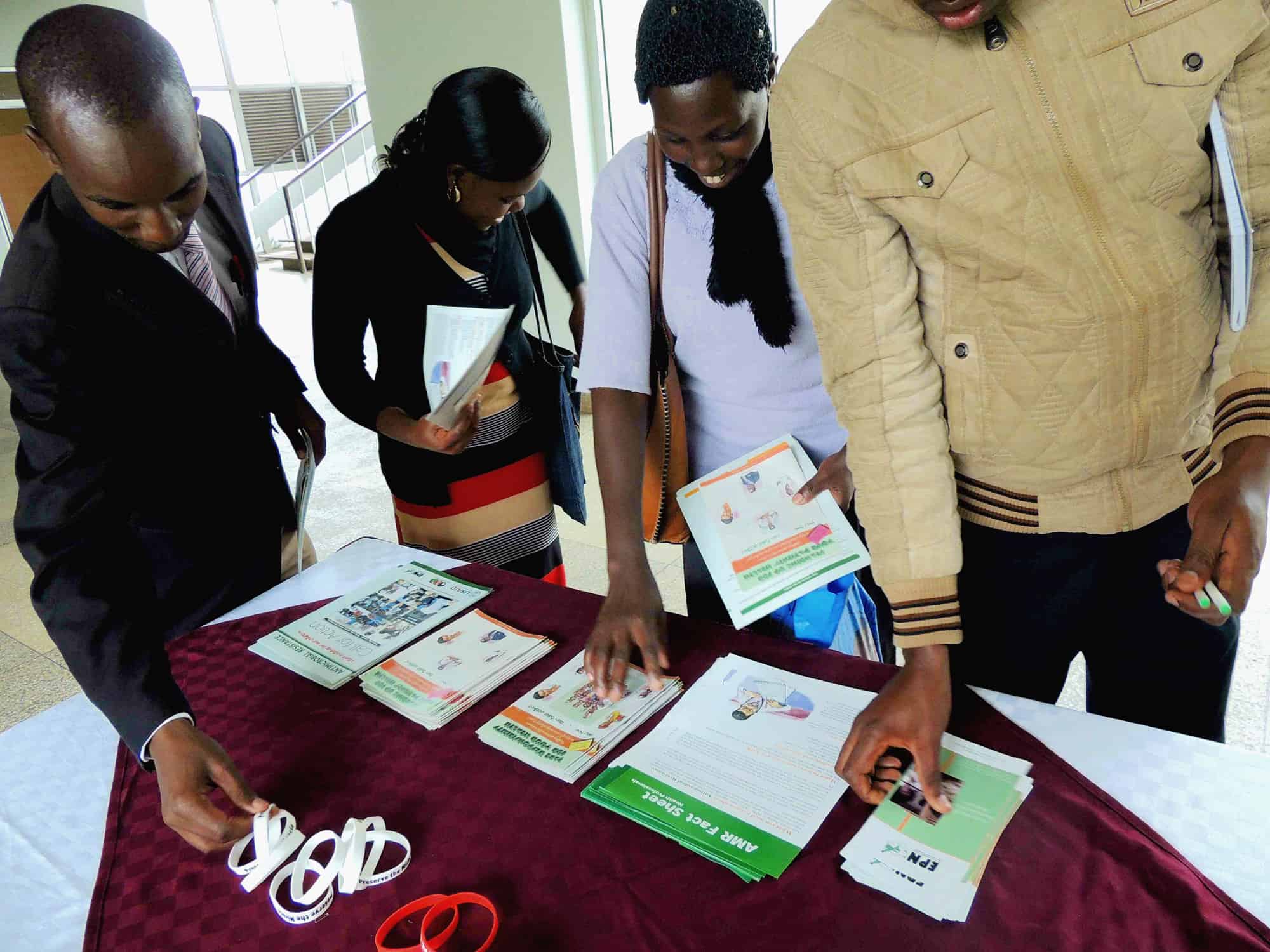January 13, 2015

CDDEP recently spoke with Eveline Wesangula, coordinator of the Global Antibiotic Resistance Partnership (GARP)-Kenya, about GARP-Kenya’s group’s second antibiotic awareness week. This is the first part of the interview, focused on the 2014 AMR week, held in November and activities in the Ministry of Health. Part two, tracing the arc of GARP-Kenya since it began in 2009, will be published next week.
CDDEP: Thank you so much for speaking with us. Could talk a bit about November’s AMR awareness week?
Eveline Wesangula: It was great. We had about five months just preparing for the events, and our team worked extra hard to make it a success. This was actually our second AMR awareness week. Last year’s was lower key, with fewer people involved. We raised more resources this year and were able to do a lot more. Turnout was good and for us it was particularly successful because it was launched by the Ministry of Health (MoH). That was critical for us.
CDDEP: Had the Ministry of Health been involved in the past?
EW: In the past, like last year, it wasn’t as significant because we were in the throes of a major political transition. A lot of Ministry staff were moving around and it was hard to know who to involve. Toward the end year, around November 2013, we were able to engage the Ministry during the antimicrobial stewardship workshop we co-sponsored in Mombasa.. From that point on, they started showing interest in the AMR activities and allowed us to participate in their meetings. We were able to do presentations at the national level. So that’s how we got the MoH on board with our activities.
CDDEP: Do you think they’ve made antibiotic resistance a priority?
EW: Not yet, but one of my colleagues at the MoH has told me that the Director of Medical Services has decided to appoint a national advisory board on AMR. We felt that was our starting point, and I know the names have already been suggested and the letters are written, so they are just awaiting a signature. So once the letters go out to the individuals, we have a real platform at the MoH to work on AMR.
CDDEP: What are the most important documents or agreements that came out of the AMR awareness week?
EW: We were most excited about the recognition that a national advisory board is needed. The appointment of this board is something tangible. This step gives us the support we need from the government to work on the next priorities That’s a real plus.
The second plus is the setup of the national focal office for AMR in the Ministry, which has not been there because no one has really been working on AMR. We requested that a national focal point or focal office be established, so our director has been working on that. With that in place, we will be able to direct AMR issues to one place at the MoH. Coordination and implementation of plans should become easier and hopefully, the Ministry will continue to appreciate the importance of this issue.
CDDEP: What are the priorities of the working group for the coming years?
EW: First of all, developing a national AMR policy. Once that is in place, we also want to develop a strategic plan to guide operations on AMR for the next five years. If we have enough data, we will be able to make clinical treatment guildelines. At the beginning of this year, we would’ve liked to have created simplified treatment guidelines for hospitals. But we didn’t have the data needed for the guideline development process—at least not for the public hospitals and for different parts of the country. But with the direction of the board, we hope to be able to set up sentinel sites to carry out surveillance on AMR and be able to report on the trends of resistance over time for the important “bug-drug” combinations. That will really help us to develop national guidelines that can either be tailored to specific regions or used as they are.
CDDEP: What are your goals for next year’s AMR week? Do you think you’ll be expanding more of this type of program, or do you have other plans?
EW: We do want to expand. And that will involve several things. This year, we were only able to focus on hospitals in Nairobi because of logistics. But we put the same presentations on CDs and gave them to people who came, who took them to different parts of the country. Last week I was in a small facility in rural area in another part of the country, and I saw the AMR poster there. A pharmacist there told me they actually conducted a continuing medical education for the hospital staff. So that’s another way of reaching out to them. Next year, we are looking forward to having a campaign that can even continue for three years. We’ll plan for measurement of impact in different areas at different points in time.
We’ve developed a protocol for knowledge, attitude, and perceptions (KAP) on antibiotic resistance in Kenya, and we hope that at the beginning of next year we’ll be able to carry out a survey. So the next campaign will run for a longer period of time and we can measure the impacts of creating awareness. And hopefully we can cover more of the country.
Part 2 of this interview will be published next week on the CDDEP blog.
Photo courtesy GARP-Kenya.











